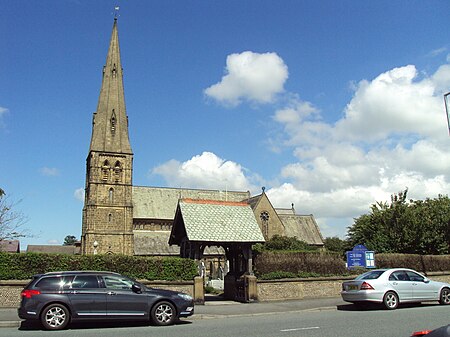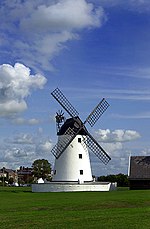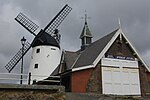St John's Church, Lytham
Church of England church buildings in LancashireChurches in the Borough of FyldeDiocese of BlackburnEngvarB from November 2013Gothic Revival architecture in Lancashire ... and 3 more
Gothic Revival church buildings in EnglandGrade II* listed churches in LancashireLytham St Annes

St John's Church is in East Beach, Lytham St Annes, Lancashire, England. It is an active Anglican parish church in the deanery of Kirkham, the archdeaconry of Lancaster, and the diocese of Blackburn. The church is recorded in the National Heritage List for England as a designated Grade II* listed building.
Excerpt from the Wikipedia article St John's Church, Lytham (License: CC BY-SA 3.0, Authors, Images).St John's Church, Lytham
South Warton Street, Borough of Fylde
Geographical coordinates (GPS) Address External links Nearby Places Show on map
Geographical coordinates (GPS)
| Latitude | Longitude |
|---|---|
| N 53.7369 ° | E -2.9549 ° |
Address
St John the Divine
South Warton Street
FY8 5EX Borough of Fylde
England, United Kingdom
Open on Google Maps








